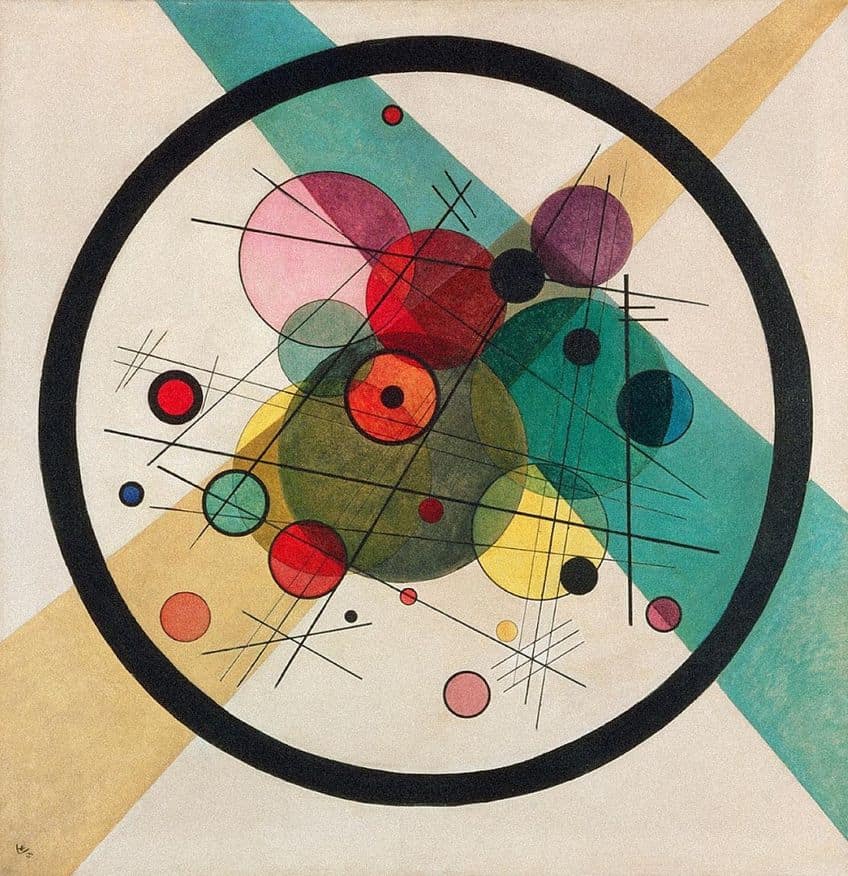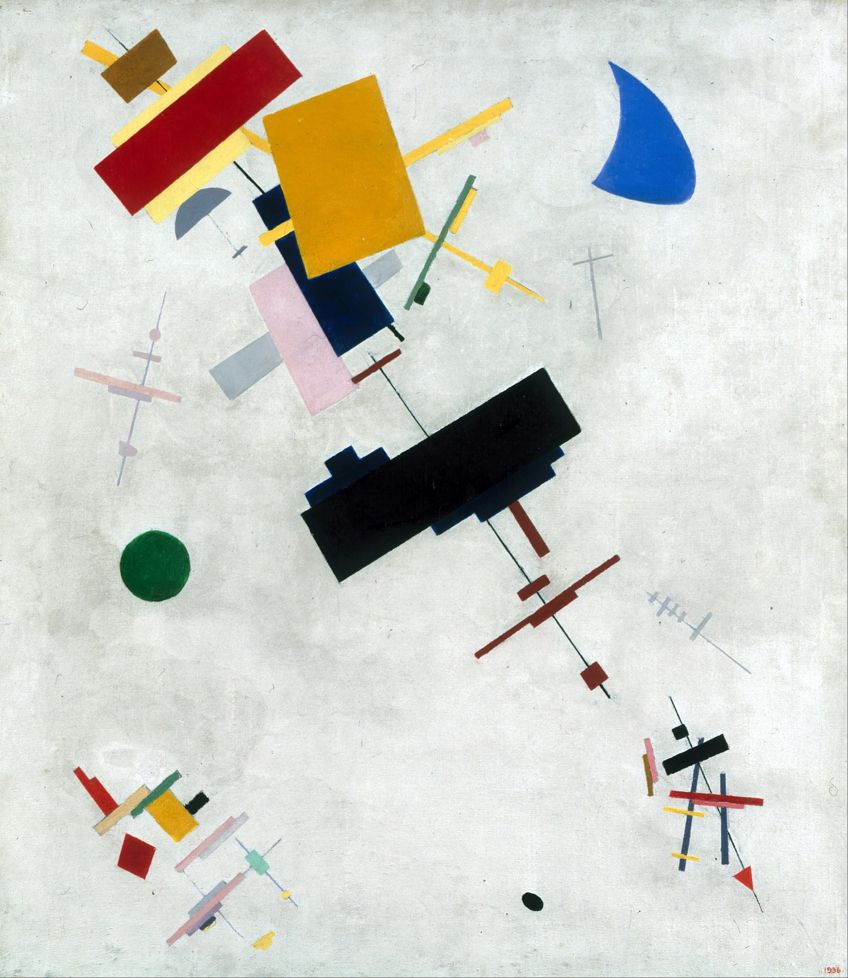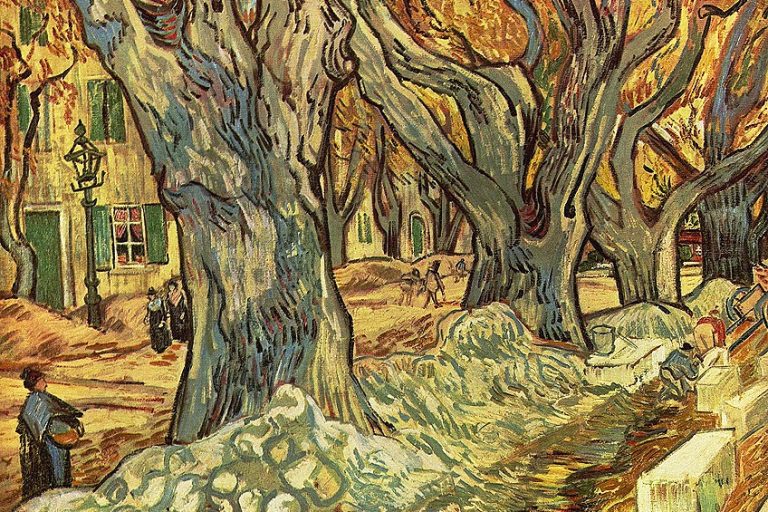Geometric Abstract Art – The Pinnacle of Non-Representative Art
Geometric abstract art, a vibrant and dynamic movement within the broader realm of abstract art, showcases the harmonious interplay of shapes, lines, and colors to create visually captivating compositions. Emerging in the early 20th century and gaining momentum through pioneers like Piet Mondrian, Wassily Kandinsky, and Kazimir Malevich, geometric abstractionism represents a departure from representational forms, focusing instead on the pure essence of form and color. This artistic style not only explores the fundamental principles of geometry but also invites viewers to experience a heightened sense of balance, rhythm, and spatial relationships. In this article, we delve into the captivating world of geometric abstract art, exploring its origins, key artists, defining characteristics, and lasting impact on the art world.
Table of Contents
- 1 Key Takeaways
- 2 What Is Geometric Abstract Art?
- 3 Historical Origins and Influential Artists
- 4 Principles and Elements of Design
- 5 Notable Artists
- 6 Modern Interpretations and Practices
- 7 Legacy of Geometric Abstract Art Today
- 8 Frequently Asked Questions
- 8.1 Who Are Some of the Most Influential Artists in the Geometric Abstract Art Movement?
- 8.2 How Does Geometric Abstraction Differ from Other Forms of Abstract Art?
- 8.3 What Are Some of the Defining Characteristics of Geometric Abstract Art?
- 8.4 What Impact Did Geometric Abstract Art Have on the Direction of Modern Art?
Key Takeaways
- Geometric abstract art emphasizes nonrepresentational compositions using geometric forms.
- This art form evolved in the early 20th century, breaking away from traditional representational art.
- It invites viewers to engage with the visual language of shapes on a purely abstract level.
What Is Geometric Abstract Art?
Geometric abstract art is an artistic movement characterized by the emphasis on geometric forms arranged in nonobjective compositions. This form of art moves away from the representation of recognizable reality and instead focuses on the inherent visual elements of shapes and colors. Originating in the early 20th century, this movement represents a significant departure from traditional art forms, foregrounding the visual language of form and composition over mimetic representation.

At its core, geometric abstract art relies on the simplicity and precise language of geometry. Artists within this movement leverage lines, angles, and surfaces to create artworks that may evoke a range of interpretations, untethered from the need to replicate the natural world. The use of these geometric elements creates a sense of order and harmony, while sometimes also delving into a more dynamic and complex layering of forms and spaces. This abstraction invites viewers to consider the artwork on its own terms, as a pure entity reflecting the artist’s investigational journey into the potential of shapes and their spatial relationships. Geometric abstract art is characterized by key elements that define its unique style. Artists within this movement utilize geometric shapes such as squares, circles, triangles, and polygons as the building blocks of their compositions, creating visually striking and structured artworks.
One of the defining features of geometric abstraction is its non-objective nature, where artworks do not depict recognizable scenes or objects from the real world.
Historical Origins and Influential Artists
Geometric abstraction is a form of abstract art that emerged in the early 20th century, characterized by its focus on simple geometric forms and colors, breaking away from traditional representation.

Pioneers of Geometric Abstraction
The advent of geometric abstraction marked a significant shift in the art world post-Renaissance, as artists began exploring forms and colors as autonomous elements. Kazimir Malevich, a Russian artist, was instrumental in this movement, famously creating the “Black Square” in 1915, which became a seminal work of Suprematism. This work evidenced a move towards nonobjective compositions, where Malevich’s floating geometric forms in white space aimed to convey the purity of shape.
Piet Mondrian, hailing from the Netherlands, was another pivotal figure whose work in the early 20th century evolved into what is known as Neoplasticism.
Mondrian’s artisanship depicted a strict language of vertical and horizontal lines combined with primary colors, reflecting his search for universal values and aesthetic. Together with Theo van Doesburg, these artists founded De Stijl, a movement that embraced an abstract, minimalist aesthetic principle, and had profound effects on the development of abstract art, influencing design and architecture of the Bauhaus.

Wassily Kandinsky, often regarded as the pioneer of abstract art, was another influential artist whose work intersected with geometric abstraction. While his earlier works were more expressionistic, he later embraced the abstraction of geometric forms, especially during his time at the Bauhaus where he taught and developed his theories on art’s spiritual potential.
Key Art Movements
- Cubism: Initiated by Pablo Picasso and Georges Braque in Paris, Cubism was central to the development of geometric abstraction. This movement deconstructed objects into geometric shapes and presented multiple viewpoints simultaneously, opening the door for abstraction.
- Constructivism: Originating in Russia around 1913 and closely linked with the revolution, Constructivism was an artistic and architectural philosophy that dismissed “art for art’s sake” in favor of art as a practice for social purposes. Following Cubism’s lead, Constructivists used geometric forms as a means for social commentary.
- De Stijl: This Dutch movement, co-founded by Piet Mondrian and Theo van Doesburg around 1917, focused on reducing art to its basic elements—straight lines, rectangular forms, and primary colors. It espoused ideals of harmony and order, and its influence extended beyond painting to graphic design, furniture, and architecture.
- Suprematism: Kazimir Malevich introduced Suprematism in Russia in 1915, emphasizing basic geometric forms and a limited range of colors. It was characterized by an interest in floating geometric shapes and the exploration of the materiality of painting.
- Bauhaus: An influential German school of art and design that ran from 1919 to 1933, the Bauhaus integrated the principles of geometric abstraction into its curriculum. Under the guidance of artists like Wassily Kandinsky, it unifieed art, craft, and technology, and had a profound influence on modern architecture, art education, and design.
Through these movements and pioneering artists, geometric abstraction sought to convey a deeper spiritual reality, detaching from the representational forms that dominated art for centuries. Abstract sculpture also emerged during these movements, applying similar principles to three-dimensional forms.
The entities discussed were at the core of the transformative wave during the Parisian scene in the early 20th century and have left an indelible mark on the history of art.
Principles and Elements of Design
In the realm of geometric abstract art, the principles and elements of design serve as the crucial building blocks that artists manipulate to convey visual language. Geometric forms, patterns, and the interplay of space and color are orchestrated within non-illusionistic space to achieve a unique aesthetic that can range from minimalist to complex compositions.

Form and Composition
Geometric abstract art is characterized by the use of geometric forms such as circles, squares, and triangles. These forms are the primary components that define the composition within a painting. The artist deliberately places these shapes in relation to one another to create a sense of balance and structure on the canvas. Geometric abstract art often employs a minimalist approach, focusing on simplicity and repetition of forms to create patterns.
The space around and within these geometric structures is equally important, contributing to the overall sense of the composition’s harmony.
Color and Texture
The use of color in geometric abstract art is often bold, relying on primary colors to create contrast and visual impact. Artists might choose colors with intention, using them to advance or recede in the viewer’s perception of space. Texture, while sometimes overlooked, can add an additional layer of interest—whether it’s the tactile quality of the materials used or the visual texture achieved through paint application techniques on the canvas. Contrasts in texture can further enhance the abstraction, emphasizing the two-dimensional surface of the artwork while at the same time drawing attention to its physicality.

Notable Artists
Geometric abstraction is marked by the significant contributions of various distinguished artists. Each brought unique perspectives and techniques to the movement, crafting a legacy that continues to influence contemporary art.

Wassily Kandinsky (1866 – 1944)
| Birth | 1866 |
| Death | 1944 |
| Place of Birth | Moscow, Russia |
| Genre of Work | Abstract Expressionism and Expressionism |
Wassily Kandinsky is celebrated for his profound influence on the development of geometric abstract art and the Expressionist movement. Inspired by music, spirituality, and theosophy, Kandinsky’s artistic journey led him to explore the emotional and spiritual dimensions of art through abstract forms and colors. He believed that art should transcend mere representation and evoke inner experiences and emotions. Kandinsky’s involvement with geometric abstract art is evident in his later works, where he employed geometric shapes, bold lines, and vibrant colors to create visually dynamic compositions that resonate with viewers on a profound level.
His theoretical writings, particularly “Concerning the Spiritual in Art,” articulated his ideas about the transformative power of abstract art, shaping the course of modern art history and inspiring generations of artists to embrace abstraction as a means of artistic expression.

Piet Mondrian (1872 – 1944)
| Birth | 1872 |
| Death | 1944 |
| Place of Birth | Amersfoort, Netherlands |
| Genre of Work | Abstract art, De Stijl, and Neoplasticism |
Piet Mondrian is renowned for his pivotal role in shaping geometric abstract art. Influenced by theosophy and the idea of universal harmony, Mondrian’s artistic journey evolved from early figurative works to the iconic grid-based compositions that define his style. Embracing geometric shapes, primary colors, and a strict grid structure, Mondrian sought to distill art to its essential elements, believing that through abstraction, he could access a universal truth. His involvement with geometric abstract art revolutionized modern art, inspiring generations of artists and contributing significantly to the development of the De Stijl movement.
Mondrian’s legacy continues to resonate in contemporary art, symbolizing a quest for balance, simplicity, and the pursuit of artistic purity.

Kazimir Malevich (1879 – 1935)
| Birth | 1879 |
| Death | 1935 |
| Place of Birth | Kiev, Ukraine |
| Genre of Work | Suprematism and Abstract art |
Kazimir Malevich, a pioneering Russian artist, played a crucial role in the development of geometric abstract art. As a leading figure in the Russian avant-garde movement, Malevich explored the concept of pure abstraction, seeking to transcend representational art and conventional forms. His most famous work, “Black Square” (1915), is emblematic of his revolutionary approach, symbolizing a departure from the visual world into a realm of pure form and color. Malevich’s involvement with geometric abstract art extended beyond painting; he also delved into theoretical writings, articulating his ideas in the manifesto “From Cubism to Suprematism.”
Through his geometric compositions and philosophical insights, Malevich’s contributions laid the foundation for the Suprematist movement, influencing artists globally and reshaping the course of modern art history.

Sonia Delaunay (1885 – 1979)
| Birth | 1885 |
| Death | 1979 |
| Place of Birth | Hradyzk, Ukraine |
| Genre of Work | Orphism, Abstract art, and textile design |
Sonia Delaunay was a key figure in the development of geometric abstract art and Orphism. Alongside her husband Robert Delaunay, Sonia explored the intersection of art and design, creating vibrant and rhythmic compositions characterized by geometric shapes and bold colors. Her involvement with geometric abstract art was not limited to painting; she also ventured into textile design, fashion, and applied arts, infusing everyday objects with dynamic patterns and geometric motifs. Delaunay’s innovative use of color and form, influenced by the avant-garde movements of the early 20th century, earned her recognition as a leading artist of her time.
Her contributions to geometric abstraction continue to inspire contemporary artists and designers, highlighting the enduring impact of her multidisciplinary approach to art.

Barnett Newman (1905 – 1970)
| Birth | 1905 |
| Death | 1970 |
| Place of Birth | New York City, United States |
| Genre of Work | Abstract Expressionism and Color Field painting |
Barnett Newman made significant contributions to geometric abstract art and the development of Abstract Expressionism. Newman’s artistic vision was deeply rooted in philosophical and spiritual themes, often exploring the sublime through his monumental paintings. He is best known for his iconic “zip” paintings, characterized by vertical lines or “zips” that traverse expansive color fields, creating a sense of depth and contemplation. Newman’s approach to geometric abstraction went beyond formalism; his works were imbued with existential themes, inviting viewers to engage with the metaphysical aspects of art.
Through his involvement with geometric abstract art, Barnett Newman challenged traditional notions of painting and paved the way for a new era of artistic exploration in the mid-20th century.

Modern Interpretations and Practices
The evolution of geometric abstract art continues to manifest in varied methods and mediums, as contemporary artists build on the foundation laid by their predecessors. Integration of modern culture and new techniques keeps the art form at the forefront of abstraction.

Abstract Geometric Art Techniques
Optical illusions and flatness, traits once pioneering in works of op art and synthetic cubism, find new executions in the hands of modern artists. Experimentation with visual world concepts, hard-edge painting, and papiers collés techniques add dimensions to the picture surface, transforming it into a carrier of applied elements.
Construction plays a key role in the creation of artworks, where artists orchestrate elements to interact with light and shadow, creating pieces that are as much about the process as the outcome.
- Experimentation: Artists like Bridget Riley and François Morellet push boundaries with their work, using meticulous precision to produce visuals that challenge perception.
- Music and art: The rhythmic quality of music influences abstract geometric art, where repetition and progression mimic musical structure.
- Collage: Modern adaptations of collage breathe new life into the medium, as seen in works by Ellsworth Kelly and María Freire, where the art is about both the act of creation and viewer perception.
Contemporary Artists and Contributions
Contemporary artists continue to enhance the vocabulary of geometric abstraction. Frank Stella and Burgoyne Diller exemplify the transition from representational art to abstraction, focusing on the essence of artistic expression beyond physical representation.
- Bridget Riley: Utilizes precise line work to create engaging optical effects.
- Carmen Herrera: Known for her bold and colorful shapes, contributing to the hard-edge sub-genre.
- Ellsworth Kelly: Explores form, color, and space to examine the relationship between object and environment.
Ivan Kliun and László Moholy-Nagy took advantage of industrial materials to emphasize abstract geometric art’s connection to the construction and material world.

Cultural Impact and Recognition
Geometric abstraction has permeated various aspects of culture, influencing everything from architectural design to fashion. The crossover between abstract art and culture underscores the genre’s capacity to reflect contemporary society while still resonating with the individual on an almost instinctual level.
- Exhibitions and museums: Major institutions continue to showcase the significance of geometric abstraction through exhibitions and permanent collections.
- Cultural dialogue: Artists like Alejandro Otero and José Albers engage in a visual dialogue with viewers, addressing cultural narratives through geometric form and composition.
- Recognition: While some artists only gained broad acknowledgment later in life, such as Carmen Herrera, their work stands as testament to the enduring nature and relevance of geometric abstract art in the modern era.
Legacy of Geometric Abstract Art Today
Geometric abstraction continues to influence artists around the globe, maintaining its place as a significant movement in contemporary art. Its fundamental principles are seen in the works of numerous modern artists who capitalize on the geometric form’s potential to create visually stimulating compositions. The movement’s longevity can be attributed to its versatile nature. Artists often combine geometric shapes with bold colors to produce pieces that variantly interact with viewer perception.

Geometric abstraction is not confined to paintings or sculptures—it pervades various mediums and disciplines, from digital art to architectural design, proving its adaptability and relevance. It underscores that art is not merely reflective of the time it originates from but also evolutionary, often cycling and resurfacing in new contexts with each subsequent generation of artists. Today, the themes and ideals of geometric abstraction remain robust. They are reinterpreted with a contemporary twist, ensuring that the legacy of the movement’s pioneers, such as Wassily Kandinsky, Piet Mondrian, and Kazimir Malevich, continues to thrive and inspire.
Geometric abstract art stands as a testament to the boundless creativity and expressive potential of the human mind. Through its exploration of geometric forms, mathematical precision, and vibrant color palettes, this artistic movement has left an indelible mark on the art world. From the bold compositions of Mondrian to the spiritual depth of Kandinsky, geometric abstract art continues to inspire and captivate audiences, transcending cultural and temporal boundaries. As we reflect on the journey through this fascinating artistic realm, we are reminded of the enduring power of abstraction to evoke emotion, challenge perception, and ignite the imagination.
Frequently Asked Questions
Who Are Some of the Most Influential Artists in the Geometric Abstract Art Movement?
Influential artists in geometric abstract art include Agnes Martin, known for pieces like Tremolo from 1962, and Constantin Brâncusi, whose sculpture The Kiss (1908) displayed mastery in geometric form. Other prominent figures are Jean Arp with works such as Sculpture to be Lost in the Forest (1932) and artists associated with the Bauhaus movement, which significantly contributed to the development and popularization of geometric abstraction.
How Does Geometric Abstraction Differ from Other Forms of Abstract Art?
Geometric abstraction is characterized by its use of geometric shapes and hard-edge forms arranged in nonrepresentational space, often conveying no reference to real-life objects. This differentiates it from other abstract art forms that may employ organic shapes, gestural brushwork, or representational elements that point to real-world references, as seen in styles like Informel or lyrical abstraction.
What Are Some of the Defining Characteristics of Geometric Abstract Art?
The defining characteristics of geometric abstract art consist of a focus on geometric shapes like squares, circles, and lines, arranged in a non-objective manner. These works prioritize the flatness of the canvas and color, emphasizing self-referential forms that do not represent or symbolize anything outside of the composition. This approach highlights the art form’s intention to evoke visual purity and harmony.
What Impact Did Geometric Abstract Art Have on the Direction of Modern Art?
Geometric abstract art had a substantial impact on modern art, ushering in movements such as Optical Art (Op Art) and influencing various design disciplines. Its emphasis on minimalism and fundamental geometric forms paved the way for further exploration in non-representational art and played a critical role in the transition away from traditional figurative painting towards an emphasis on structure and color as primary means of expression.
Isabella studied at the University of Cape Town in South Africa and graduated with a Bachelor of Arts majoring in English Literature & Language and Psychology. Throughout her undergraduate years, she took Art History as an additional subject and absolutely loved it. Building on from her art history knowledge that began in high school, art has always been a particular area of fascination for her. From learning about artworks previously unknown to her, or sharpening her existing understanding of specific works, the ability to continue learning within this interesting sphere excites her greatly.
Her focal points of interest in art history encompass profiling specific artists and art movements, as it is these areas where she is able to really dig deep into the rich narrative of the art world. Additionally, she particularly enjoys exploring the different artistic styles of the 20th century, as well as the important impact that female artists have had on the development of art history.
Learn more about Isabella Meyer and the Art in Context Team.
Cite this Article
Isabella, Meyer, “Geometric Abstract Art – The Pinnacle of Non-Representative Art.” Art in Context. April 9, 2024. URL: https://artincontext.org/geometric-abstract-art/
Meyer, I. (2024, 9 April). Geometric Abstract Art – The Pinnacle of Non-Representative Art. Art in Context. https://artincontext.org/geometric-abstract-art/
Meyer, Isabella. “Geometric Abstract Art – The Pinnacle of Non-Representative Art.” Art in Context, April 9, 2024. https://artincontext.org/geometric-abstract-art/.











